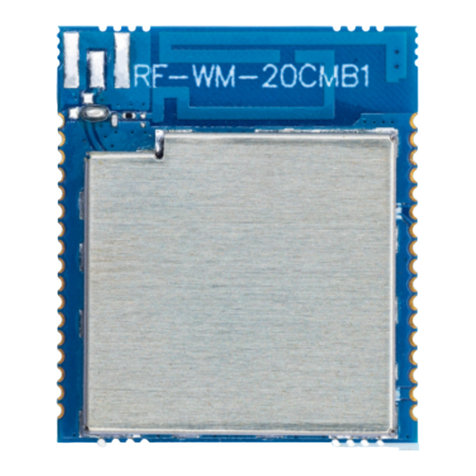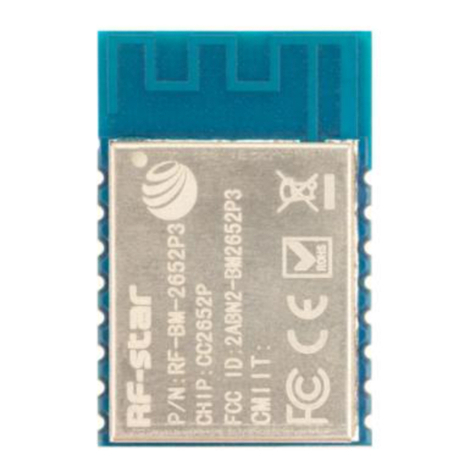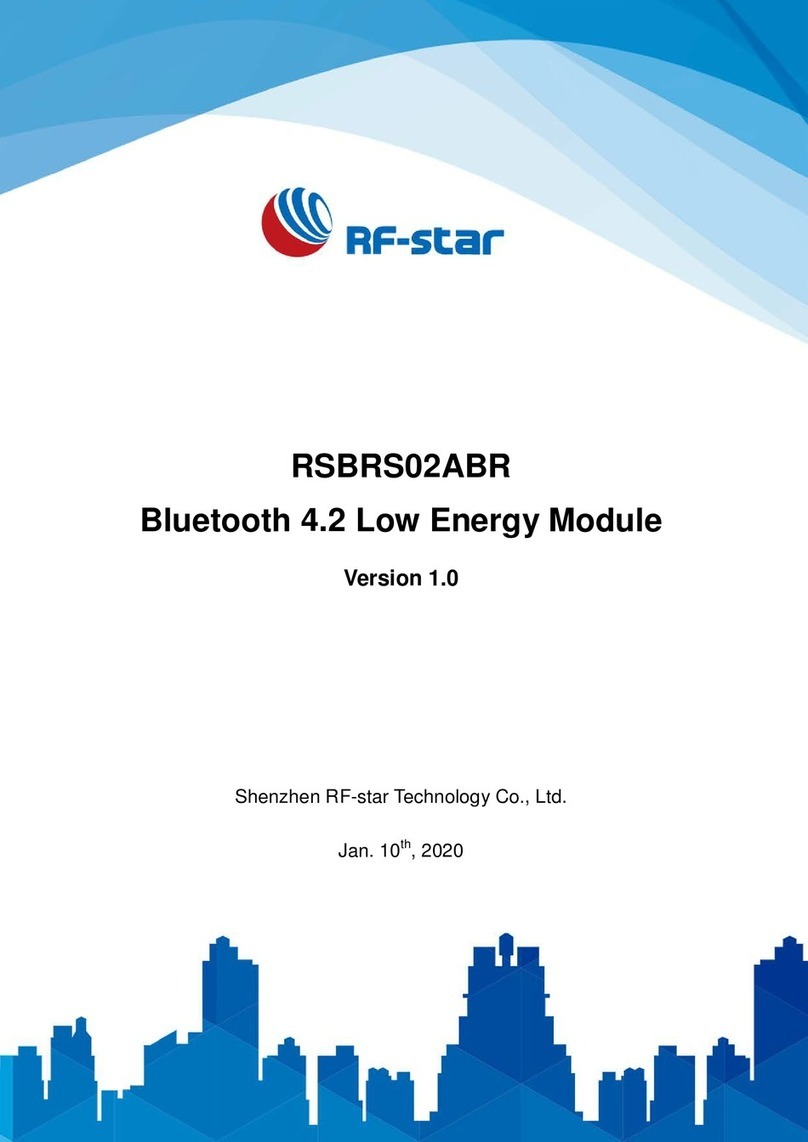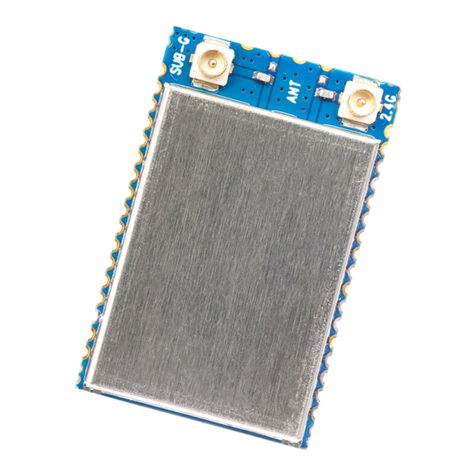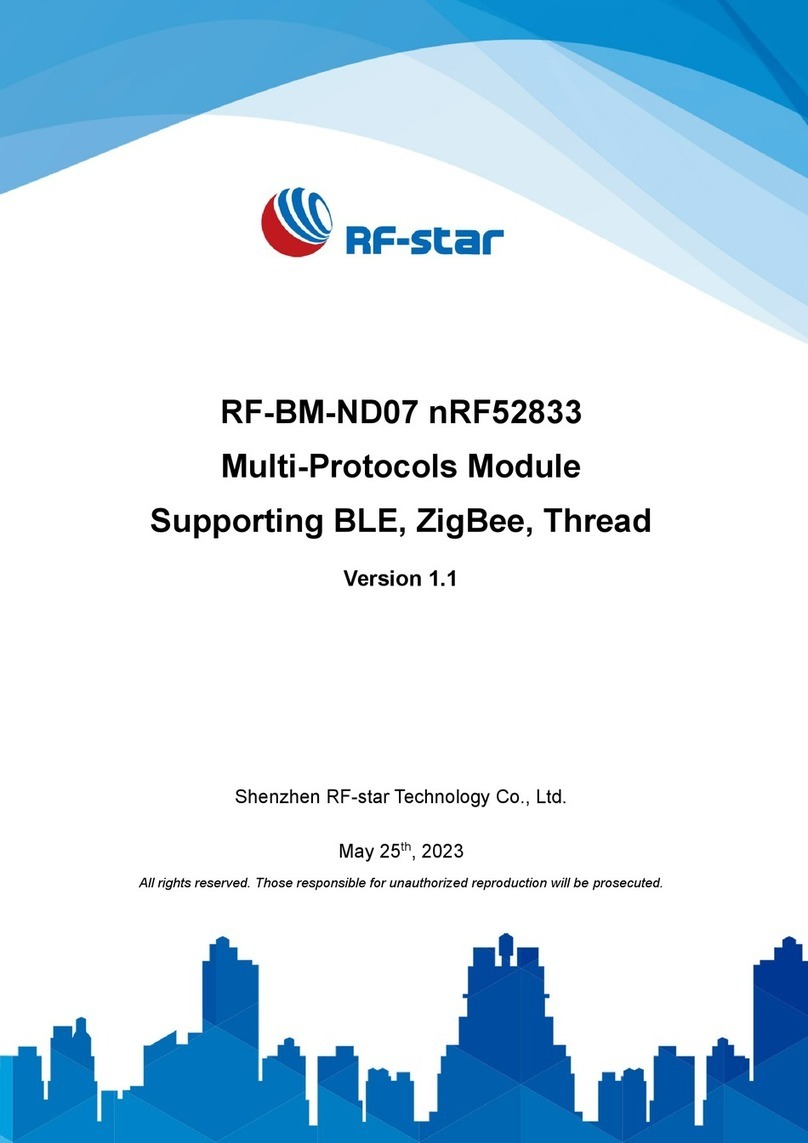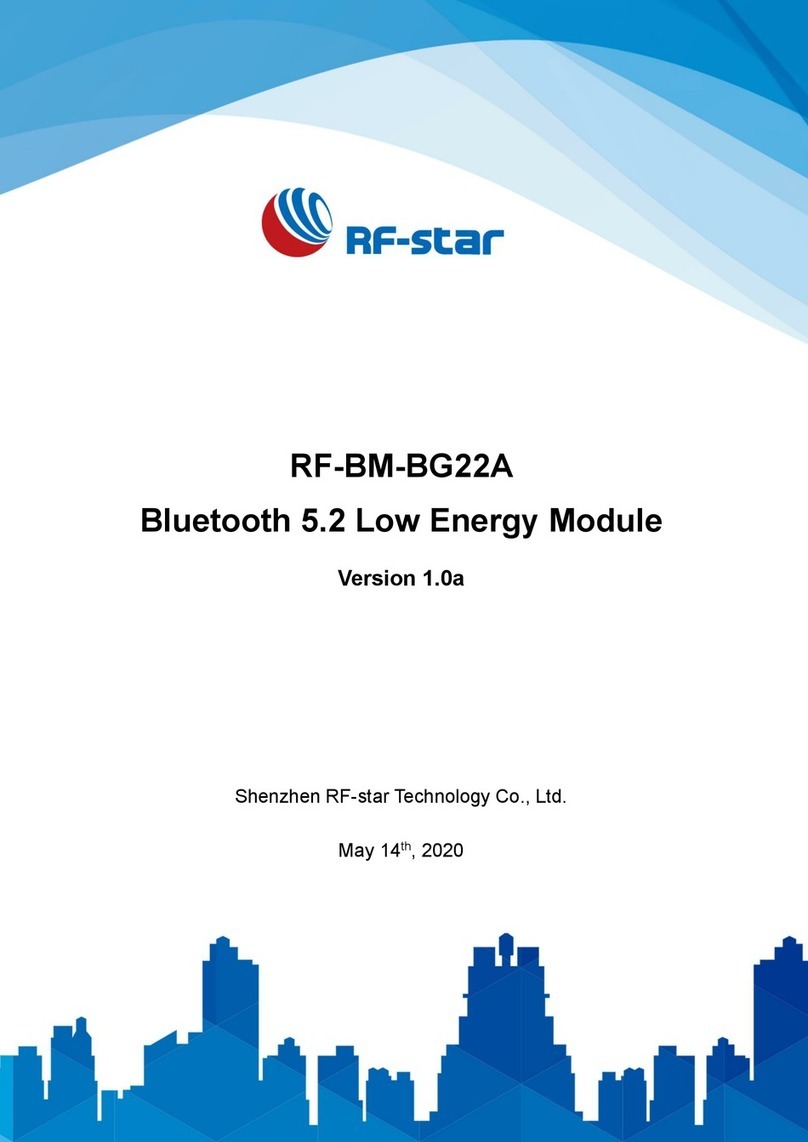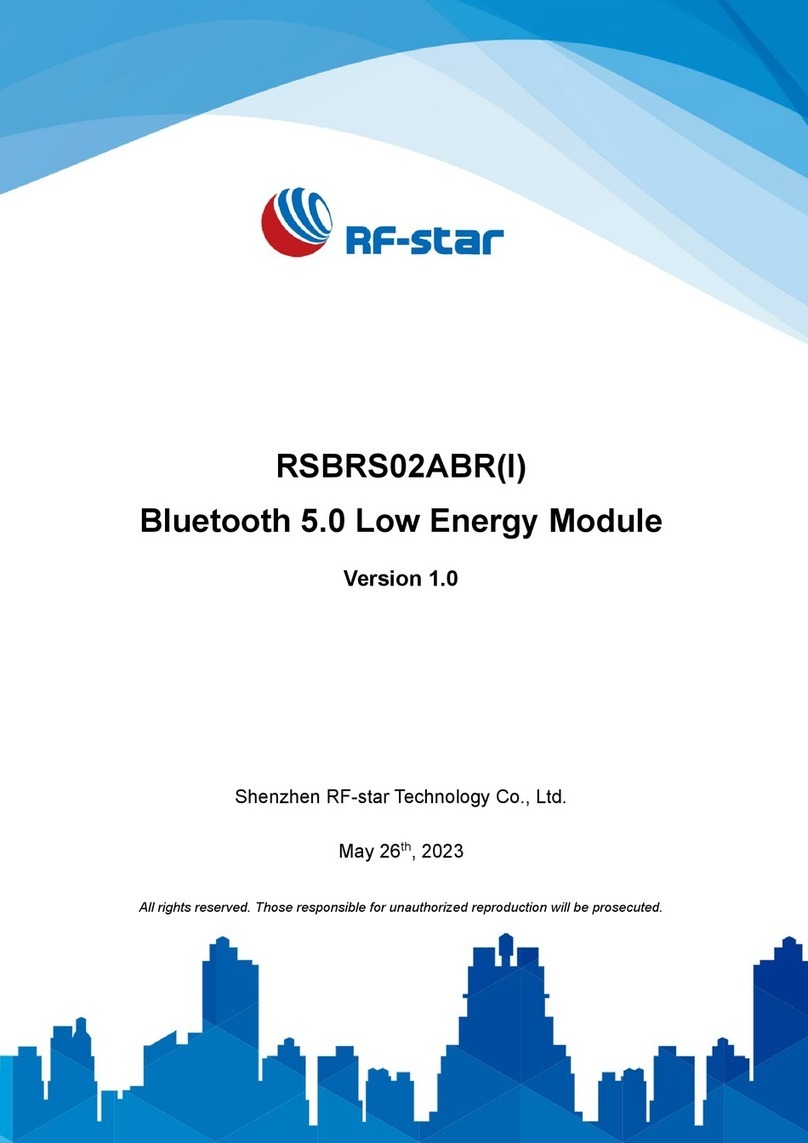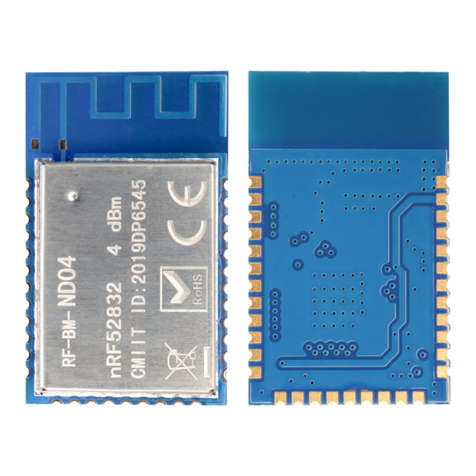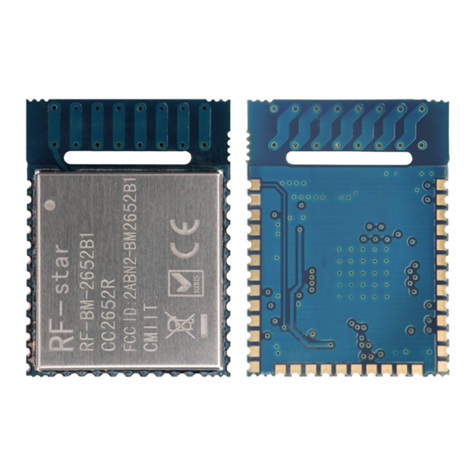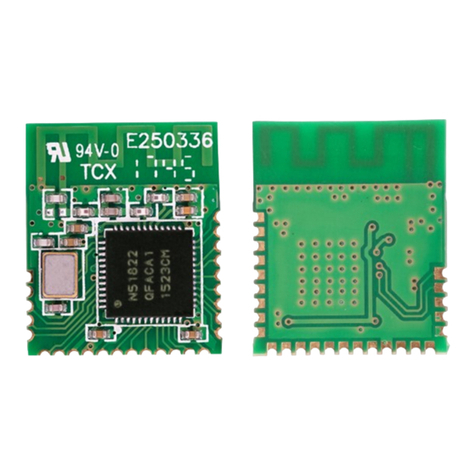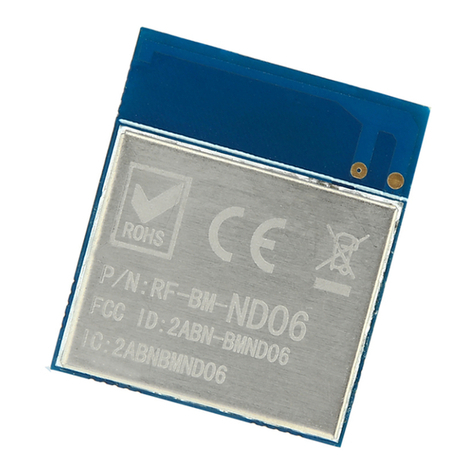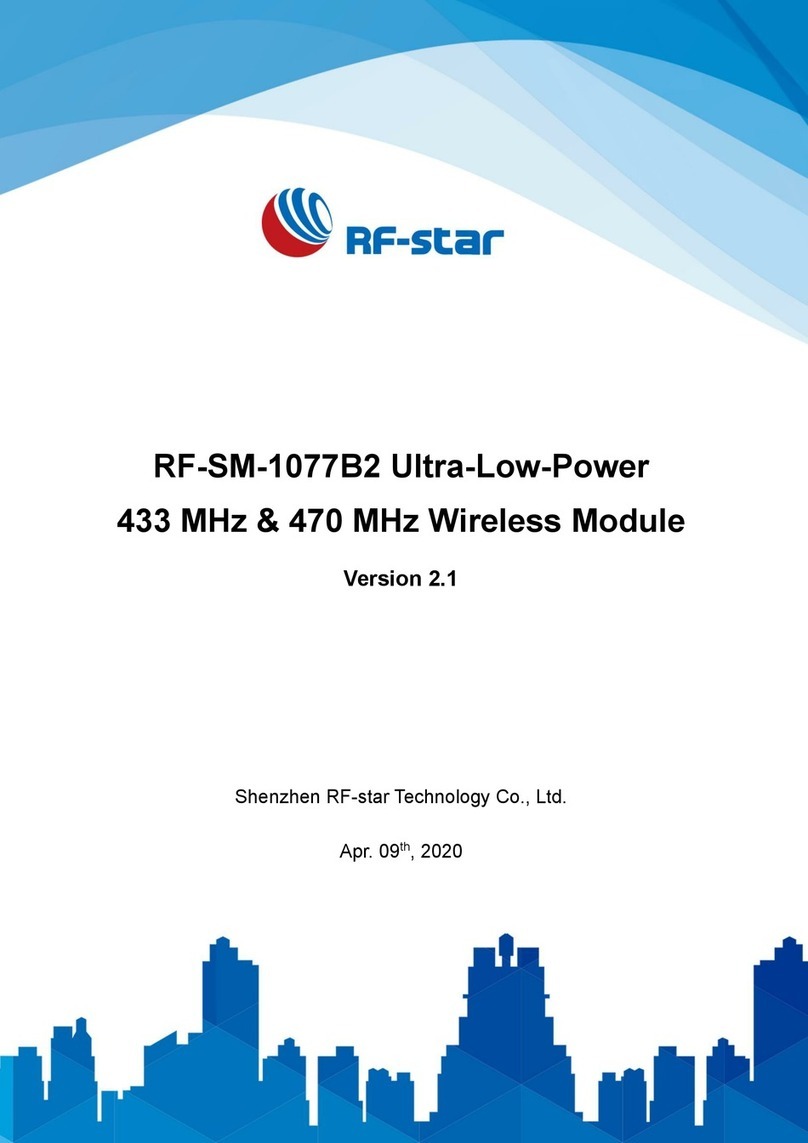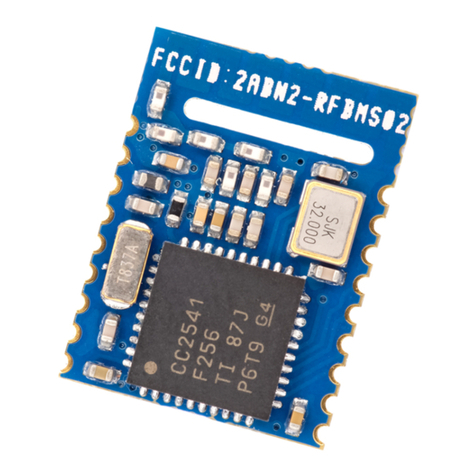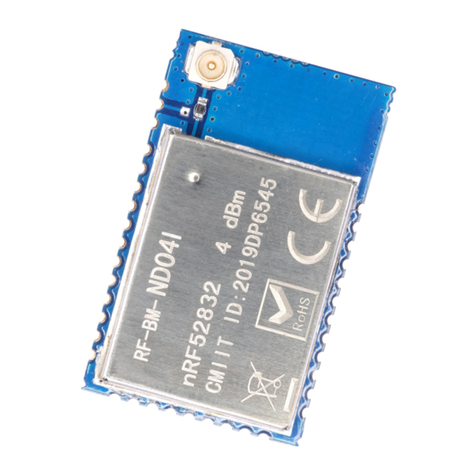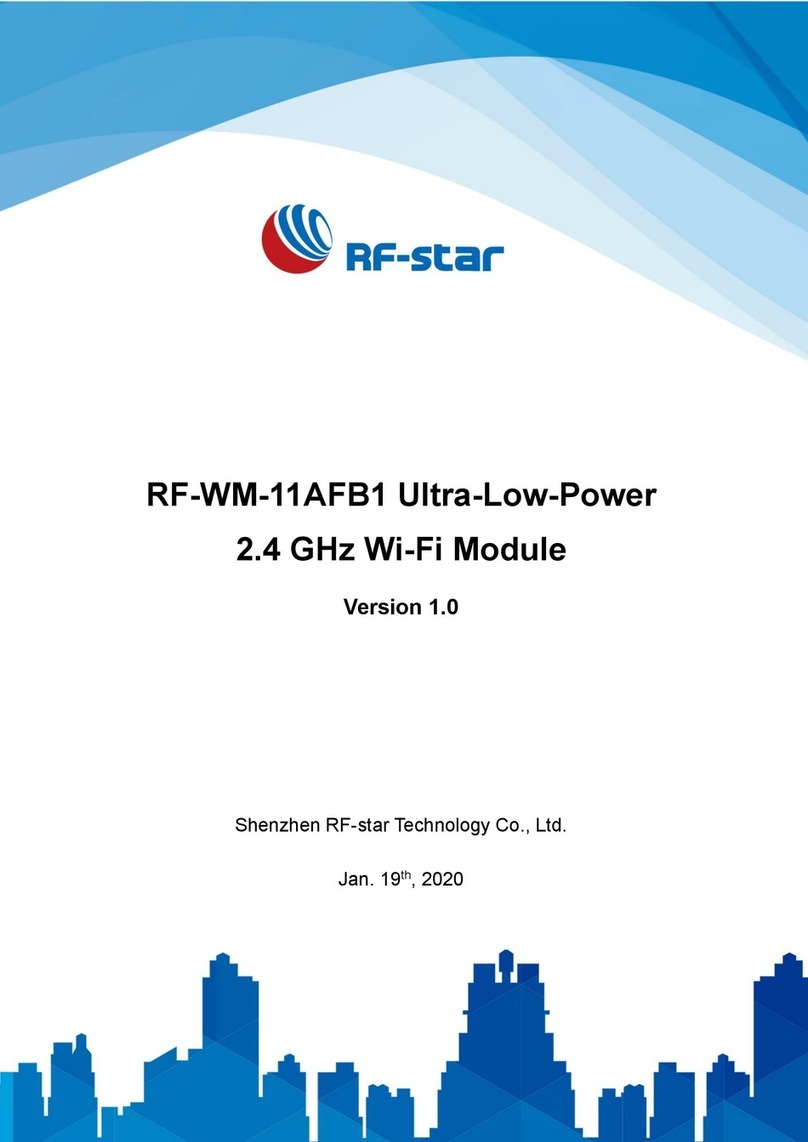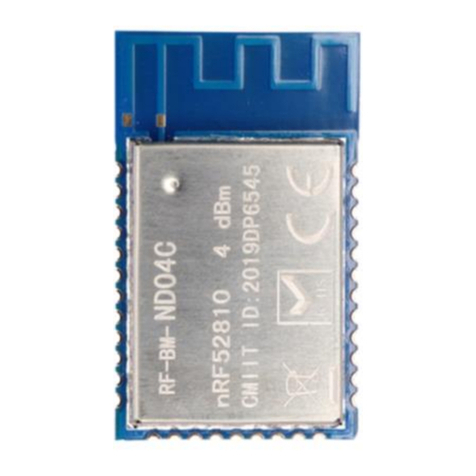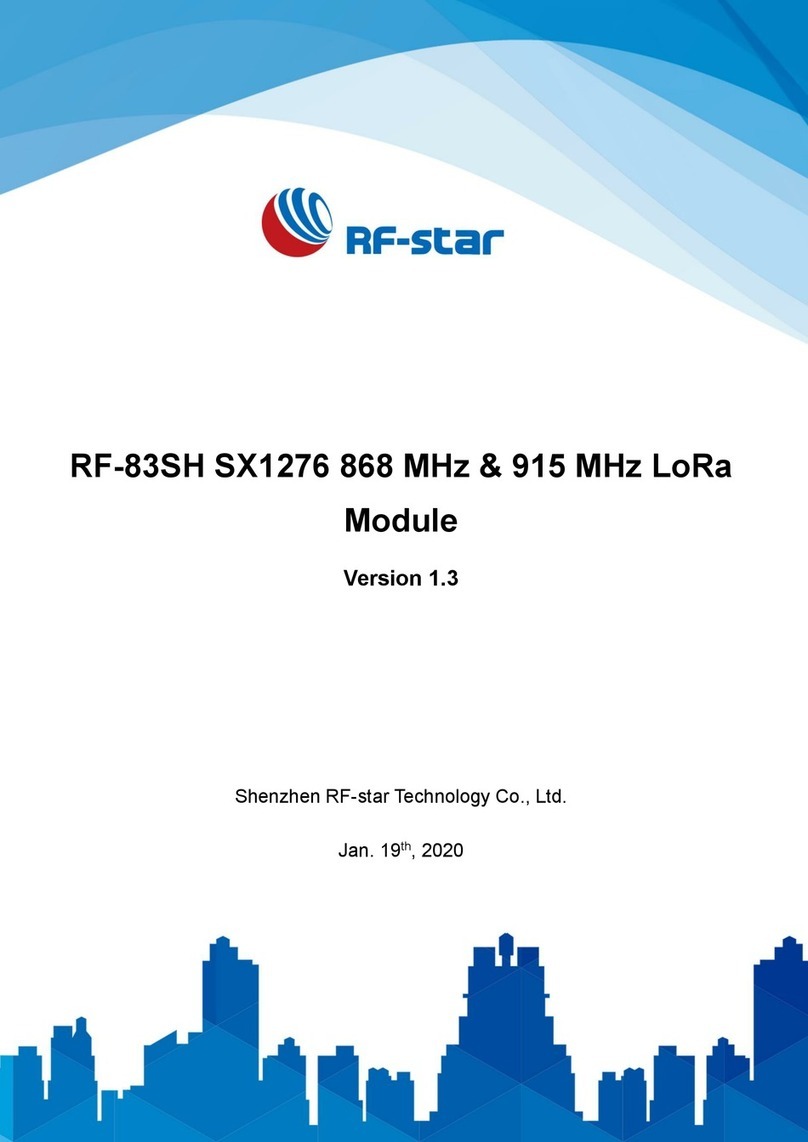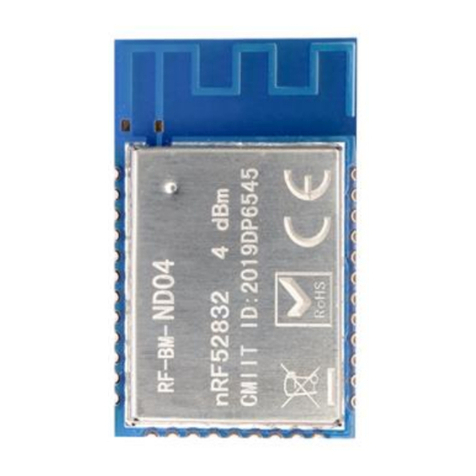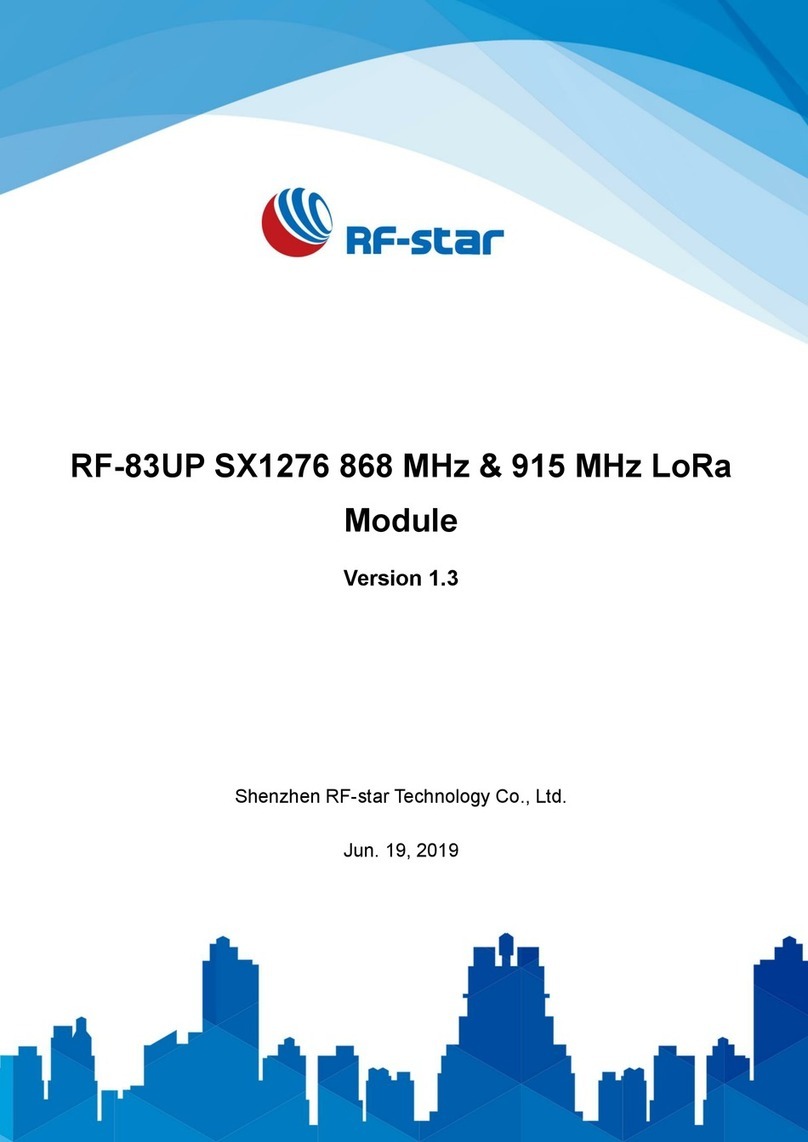
RF-BM-BG22A1
www.szrfstar.comV1.0 - Sep., 2020
Table of Contents
1 Device Overview..................................................................................................................................... 1
1.1 Module Series........................................................................................................................... 1
1.2 Description....................................................................................................................................1
1.3 Key Features................................................................................................................................1
1.4 Applications.................................................................................................................................. 2
1.5 Functional Block Diagram........................................................................................................... 2
1.6 Part Number Conventions .......................................................................................................... 2
Table of Contents....................................................................................................................................... 5
Table of Figures .........................................................................................................................................6
Table of Tables...........................................................................................................................................6
2 Module Configuration and Functions.................................................................................................... 7
2.1 Module Parameters.....................................................................................................................7
2.2 Module Pin Diagram.................................................................................................................... 8
2.3 Pin Functions ...............................................................................................................................8
3 Specifications........................................................................................................................................ 10
3.1 Recommended Operating Conditions ..................................................................................... 10
3.2 Handling Ratings ....................................................................................................................... 10
3.3 Current Consumption................................................................................................................ 10
4 Application, Implementation, and Layout ........................................................................................... 11
4.1 Module Photos........................................................................................................................... 11
4.2 Recommended PCB Footprint ................................................................................................. 11
4.3 Schematic Diagram and Reference Design............................................................................ 12
4.4 Basic Operation of Hardware Design...................................................................................... 13
4.5 Trouble Shooting........................................................................................................................ 14
4.5.1 Unsatisfactory Transmission Distance.......................................................................... 14
4.5.2 Vulnerable Module.......................................................................................................... 15
4.5.3 High Bit Error Rate.......................................................................................................... 15
4.6 Electrostatics Discharge Warnings.......................................................................................... 15
4.7 Soldering and Reflow Condition............................................................................................... 15
4.8 Optional Packaging................................................................................................................... 17
5 Revision History.................................................................................................................................... 17
6 Contact Us............................................................................................................................................. 18
Shenzhen RF-star Technology Co., Ltd. Page 5 of 19
